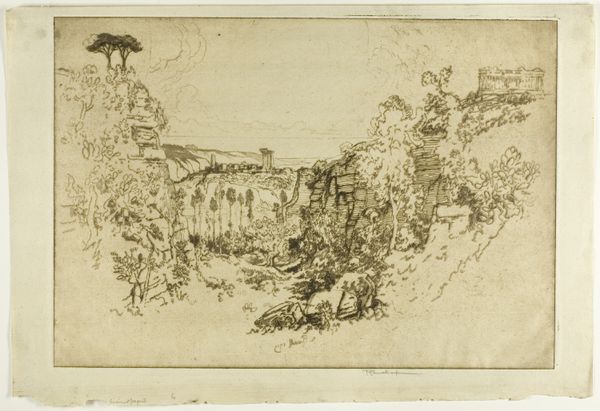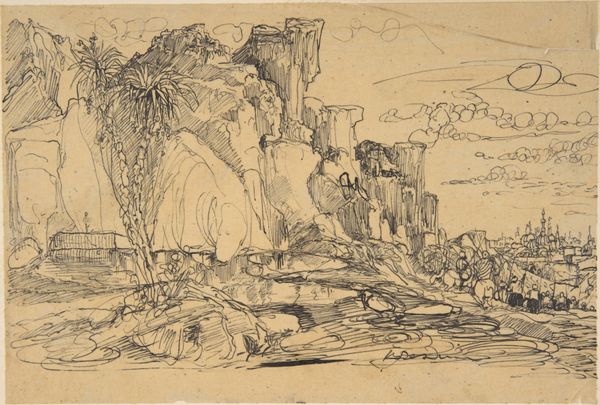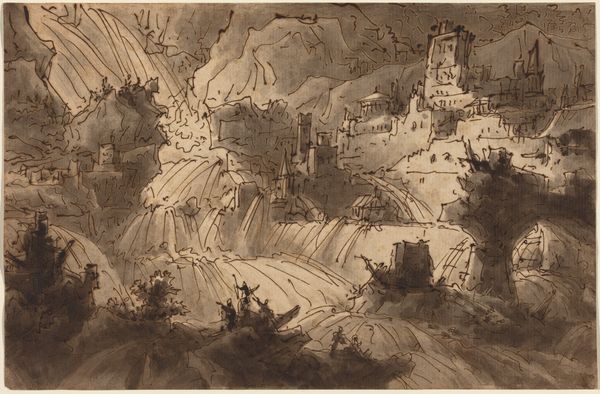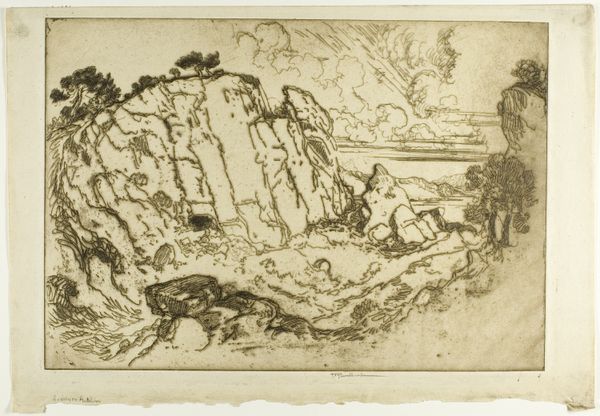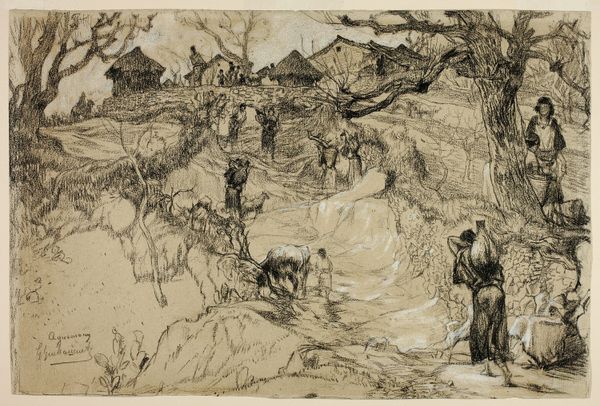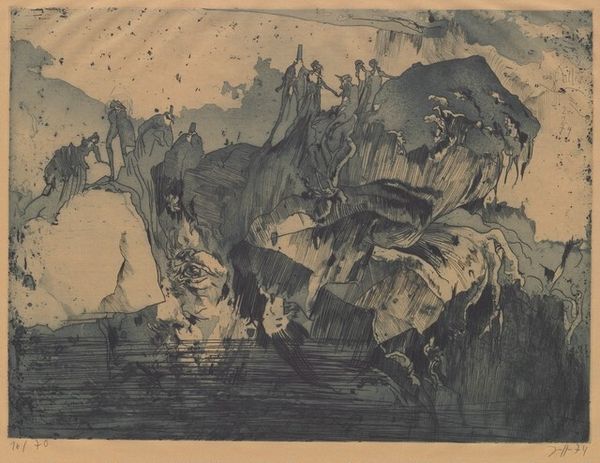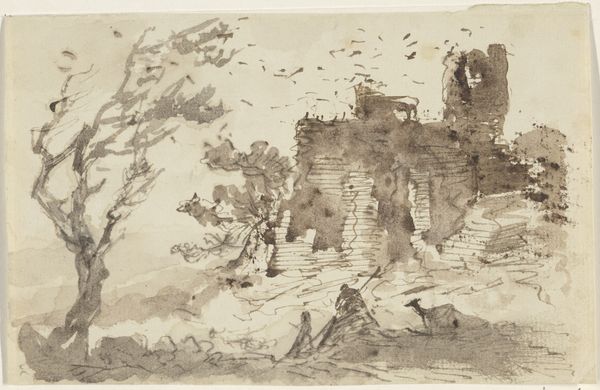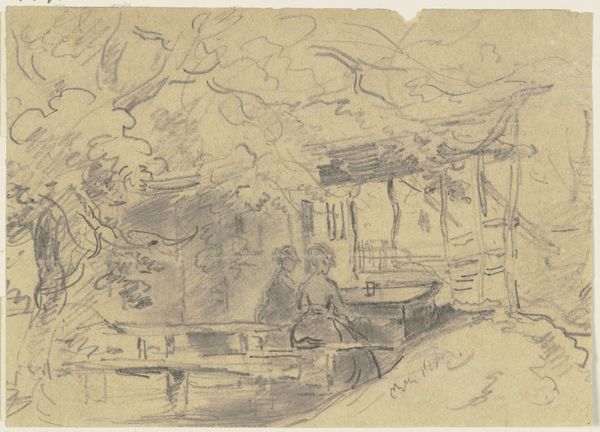
drawing, print, paper, ink
#
drawing
# print
#
landscape
#
paper
#
ink
Dimensions: 90 × 152 mm (primary/secondary supports); 267 × 372 mm (tertiary support)
Copyright: Public Domain
Curator: Today, we’re looking at "Exotic Landscape" by Rodolphe Bresdin, an undated drawing and print made with ink on paper. Editor: It has a frenetic, almost claustrophobic quality. Look at that dense web of lines! A real masterclass in how texture can evoke… anxiety, maybe? Curator: Bresdin's landscapes often toyed with perceived realities. It's interesting to consider the market for such "exotic" scenes, appealing to European fantasies of faraway lands while simultaneously challenging academic artistic norms. How did he obtain the raw materials to craft this piece? Did colonialism affect it? Editor: I’m immediately drawn to the craftsmanship. The way he uses varying densities of line to create depth… Notice how the heavy, almost frantic lines give weight to the dwellings versus the lighter touch suggesting the misty mountain backdrop. The type of paper he chose… it all contributes to the sense of something fevered, almost hallucinatory. Curator: Consider also, Bresdin’s social positioning. An outsider, financially unstable. This impacted not only his subject matter, reflecting his social concerns, but also his methods. We have to think about his target demographic: what kind of person was able to buy or afford to keep his pieces? What power dynamic occurred between the creator and consumer? Editor: I wonder if that franticness you pointed out speaks to that precarious existence – a kind of relentless energy channeled into his work, each stroke deliberate yet urgent. Even the composition, with its close foreground and towering background, evokes this sensation of being caught between contrasting worlds. The relationship is there, clearly. Curator: Absolutely, and that ties into the larger narrative of 19th-century printmaking—a democratized art form yet one fraught with its own class and cultural biases. How this kind of landscape can speak for an artist. The style, texture and chosen medium speak a thousand different messages. Editor: Seeing how an artist transforms something ordinary—ink and paper—into an entire world teeming with emotion and suggestion, really gets to the heart of what making means. It's a visceral response made tangible. Curator: It prompts reflection on the complex networks of artistic creation, consumption, and societal interpretation across different eras. Thank you for pointing those things out. Editor: Likewise! Thanks to this discussion, I definitely will never perceive this "Exotic Landscape" the same way.
Comments
No comments
Be the first to comment and join the conversation on the ultimate creative platform.

